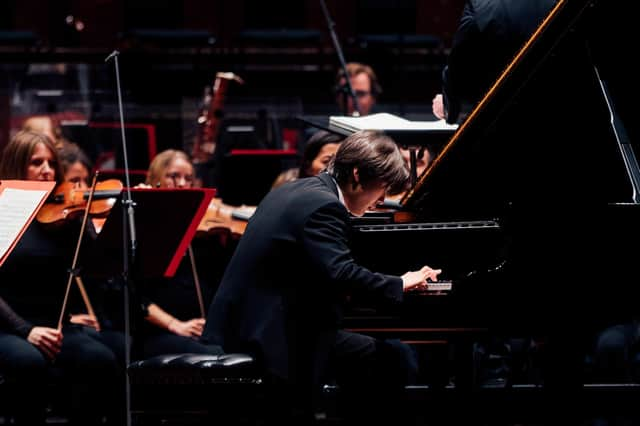Edinburgh International Festival music reviews: Philharmonia Orchestra | Brautigam, Hoppe & Poltéra


Philharmonia Orchestra/Santtu-Mathias Rouvali, Seong-Jin Cho (piano), Usher Hall *****
There’s always been a distinctive gleam and glitter to the Philharmonia Orchestra’s sound. But in his first year as Principal Conductor, young Finn Santtu-Mathias Rouvali has clearly cranked things up a notch or two. That much was evident from the Shostakovich Tenth Symphony that formed the climax of the Philharmonia’s first orchestral concert as part of its EIF residency. It was a blistering, furious, viciously incisive account that shone a piercing light on Shostakovich’s immense score in all its brooding anguish, blazing fury and precarious sense of eventual triumph. Rouvali judged the long, slow opening movement brilliantly, with a sense of inevitability to the gradual flowering of Shostakovich’s gnarly ideas, and their withering, too, as the movement closed. His storming second movement – reputedly a musical portrait of Stalin – snarled and gnashed, and it was at moments like this that the Philharmonia’s high-definition sound, and Rouvali’s biting precision, really came into their own in magnifying Shostakovich’s already terrifying intensity. We’re still none the wiser as to what the composer really meant with the Symphony – are those athletic closing tattoos of his initials from the timpani (a brilliantly powerful Antoine Siguré) really a signal of victory? – but Rouvali remained faithful to the score in all its mystery and grotesquerie. An unforgettable account.
Advertisement
Hide AdBeforehand, Korean pianist Seong-Jin Cho delivered an equally memorable performance of Beethoven’s ‘Emperor’ Concerto, full of steely dexterity and breathtaking nimbleness. At times – the opening cascades that announce the piano’s presence, for example – it was almost as if he was out to push the instrument as far as it could go in terms of volume and intensity. Indeed, occasionally his strong definition slipped into hard-edged brittleness, and he was clearly determined to avoid any sense of soft-edged dreaminess in quite a brisk, clipped slow movement. Nonetheless, it was a bracing account, with equally perceptive support from the Philharmonia. David Kettle
Brautigam, Hoppe & Poltéra, Queen’s Hall ****
The music was relatively familiar, but the medium of delivery for these piano trios by Fanny Mendelssohn, Schumann and Schubert offered a fresh perspective. Ronald Brautigam had opted to perform on a 19th-century Erard piano rather than the customary modern Steinway. The relationship with his string colleagues - violinist Esther Hoppe and cellist Christian Poltéra - was one of growing fascination.
Inevitably, it took modern ears a moment to acclimatise to the softer, velvety hue of the early instrument, its drier precision, varied tonal displacement and slightly antique demeanour. But that in itself promoted greater interactive subtlety between the players. This was a match of equals.
The opening of Fanny Mendelssohn’s Piano Trio in D minor was a case in point, its initial adrenalin rush expressed in refreshingly nuanced terms, yet still excitingly feverish. Conversational intimacy were effortlessly seductive, as in Schumann’s Fantasiestücke Op 88 which followed, its own cocktail of melancholic lyricism, rustic spring and conclusive optimism joyously reimagined.
That left Schubert’s more extensive Piano Trio No 2 in E Flat as the meatiest challenge. The density of the outer movements were like monumental bookends to the characterful folksong and whimsy of the inner ones, though again revealingly refreshed. Ken Walton